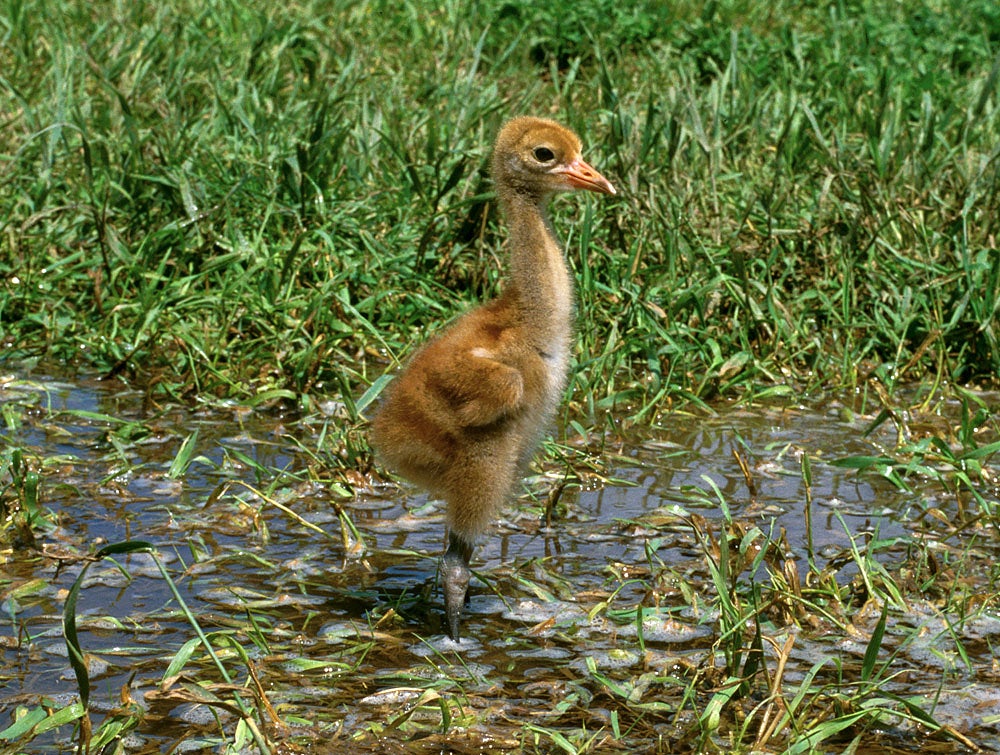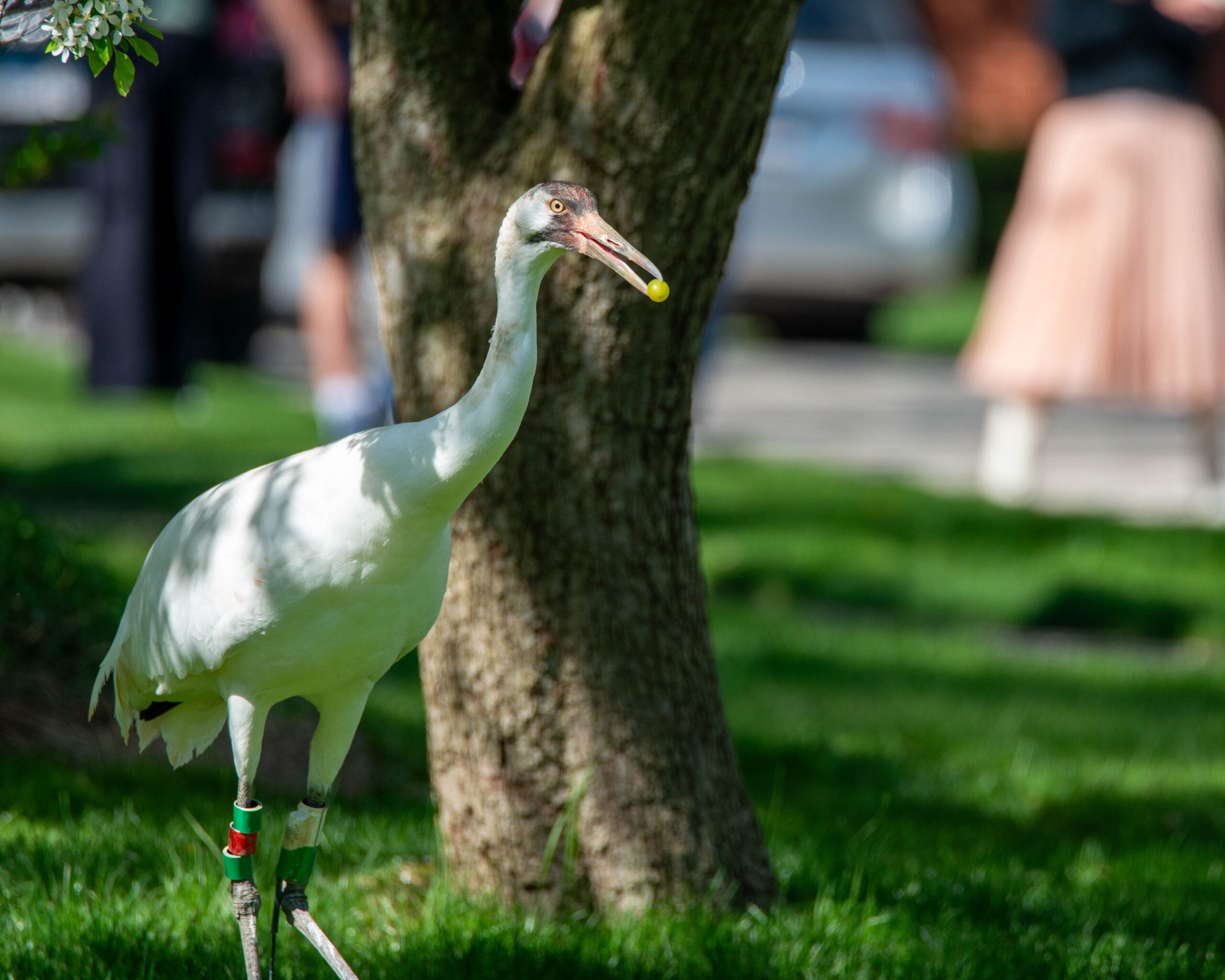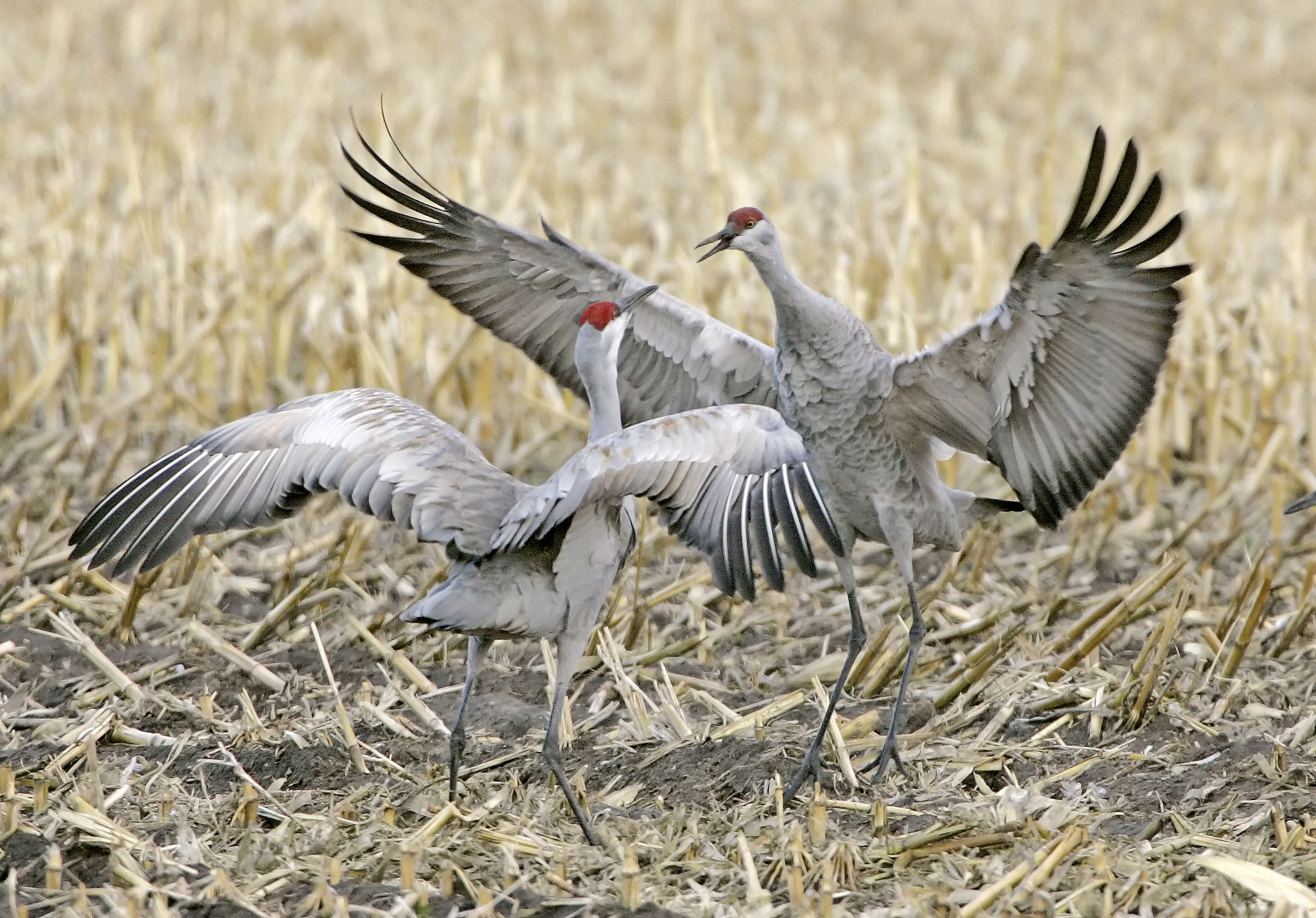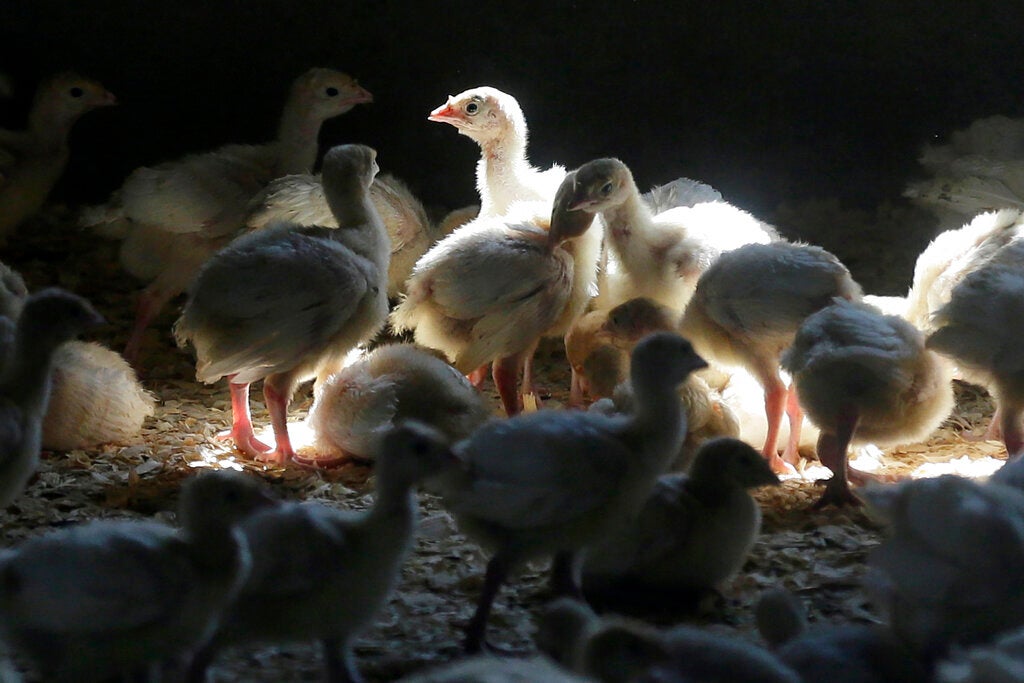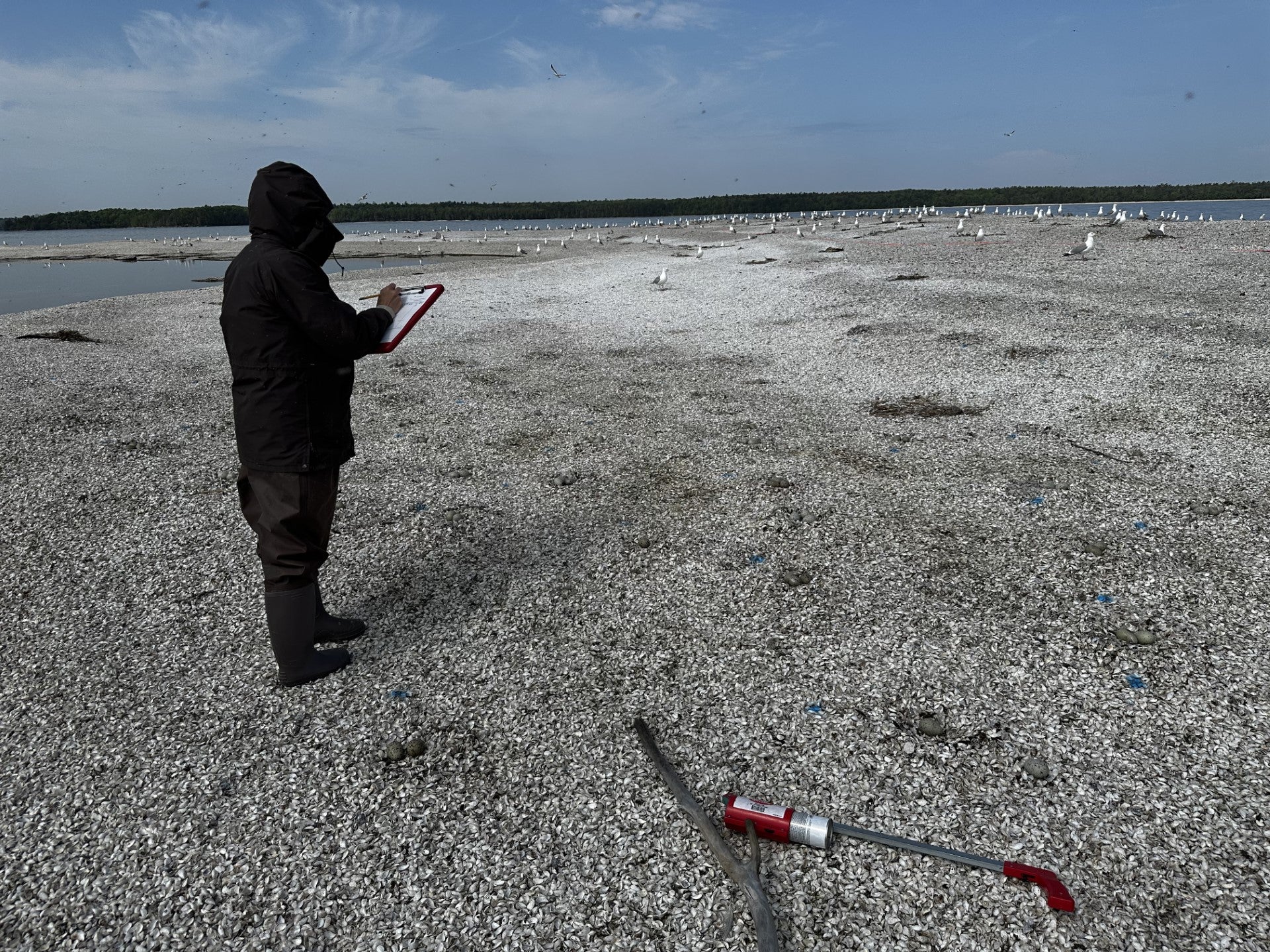There’s been a major change in Wisconsin’s years-long experiment to help whooping cranes. Humans wearing crane costumes are no longer teaching young birds to fly behind ultra-light aircraft. Instead, crane chicks are mostly being raised by adult cranes, in hopes that years from now, the birds become better at reproducing in the wild.
By one key measurement — the number of adult birds — the 15-year public/private effort to create a migrating flock of whooping cranes in the eastern United States has been a success. This time of year, if you’re near the right marsh, you can hear and see the cranes.
In fact, each summer, about 100 of the federally endangered whoopers live in the Upper Midwest, mostly in Wisconsin, before migrating in the fall to southeastern U.S. states.
Stay informed on the latest news
Sign up for WPR’s email newsletter.
Some mature cranes have paired off and produced offspring, mainly at the Necedah National Wildlife Refuge in central Wisconsin. But many wild-hatched chicks have not survived more than a few weeks or months, scientists say, mainly due to predators or habitat. All but one of 23 chicks hatched this year at the refuge have died.
Last winter, the U.S. Fish and Wildlife Service decided bird reproduction and rearing might eventually improve if chicks, newly hatched in captivity, spent more of their first summer with captive adult cranes serving as surrogate parents and much less time with costumed humans. Such a change has taken place this year with nine chicks at the Patuxent Wildlife Research Center in Maryland, and with three youngsters at the International Crane Foundation near Baraboo, Wisconsin.
In the conference room at the Crane Foundation recently, a video feed from what’s called Crane City — a secure breeding facility about a half-mile away — showed two big white whoopers and a cinnamon-colored chick gently walking around and occasionally eating.
Kim Boardman, curator of birds, said she’s learned a lot from watching this temporary crane family.
“You learn those really subtle behaviors of how parents interact with chicks, and how they get them to eat that piece of food that they really don’t want to eat, how to get them to eat their vegetables, so to speak,” Boardman said.
The foundation’s chick-rearing supervisor, Marianne Wellington, said she’s noticed when the young start to wander a bit, “and how much they stay really close to their parents. And as the chick gets older and can forage on its own, it’s more like a toddler investigating what they can do on their own but they’re always connecting with their parent and talking to them.”
The Crane Foundation also hopes adult cranes better teach the chicks to fend off predators.
Later this month, the three chicks in Baraboo will be put in crates and taken to cranes living in the wild. The chicks in Maryland will be flown in a plane to Wisconsin and first be brought to a portion of the White River Marsh State Wildlife Area that’s closed to the public.

A crane pen at the White River Marsh State Wildlife Area. Courtesy of Joe Duff
The birds will live in a pen for a few days to get accustomed to the change in location, said Joe Duff of the group Operation Migration.
Duff said the birds will soon be let out and connected with adults across central Wisconsin.
“That will give them the opportunity to build their wings up because they’ve been in captivity all summer,” Duff explained. “So they need to experiment with flying, and get their wings going and accustomed to the ways of the wild and spend some time with their adoptive parents.”
Duff is one of the former ultralight pilots that led young cranes on past migrations. He said he’s on board with the new technique to try to improve breeding.
But the various people involved in the Whooping Crane Eastern Partnership acknowledge they’re not sure how the fall migration will go, and won’t know if breeding will improve for four or five years, when the chicks mature.
Even a key architect of the change, Pete Fasbender of the U.S. Fish and Wildlife Service admits to uncertainty.
“We don’t know how these chicks will be any different than the chicks that we’ve released the last 15 years,” Fasbender said. “We just know that the chicks released in the last 15 years, there was something missing in their behavior where they were incapable of successfully fledging chicks.”
The change in the whooping crane project is likely to be discussed at an annual Whooping Crane Festival that began Thursday in Princeton, Wisconsin, a few miles from the White River Marsh Wildlife Area.
Wisconsin Public Radio, © Copyright 2024, Board of Regents of the University of Wisconsin System and Wisconsin Educational Communications Board.

